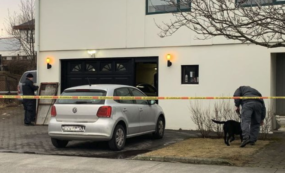Posted on 01 Jul 2015
Introduction
The “nexus” between organized crime and violent conflict has been a subject of growing international concern. In 2004, the report of the High-Level Panel on Threats, Challenges and Change highlighted the role of organized crime in fueling civil wars through illicit trade in conflict commodities, small arms and the security implications of drug trafficking on state authority and the rule of law. Since then, the significant rise in the number of United Nations Security Council statements, resolutions and debates that contain references to organized crime attests to a mounting preoccupation within the UN and among Member States with regard to the impact of organized crime on peace and security (see Figure below).

Admittedly, divergence remains among countries as to whether – or in which circumstances – the threat posed by organized crime is a threat to international peace and
security, as opposed to something else. Yet, on the ground a growing number of peace operations now have mandates that refer to transnational organized crime or activities that constitute transnational organized crime. The remit of these mandates is broad and include the authority to deter drugs or arms trafficking, curb illicit flows that fund warring
parties or terrorist groups, or reinforce the capacity of national authorities (police and justice) to investigate and prosecute criminal actors. With recent trends in violent conflict pointing to increasing connections between organized crime, conflict actors and terrorists, attention to the “nexus” is unlikely to abate in the near future.
On the research front, we also see growing attention to the crime-conflict “nexus”. Researchers specialized in the study of civil wars, development and peacebuilding have increasingly integrated organized crime into their analysis. This literature has shed some light on the impact of organized crime on contemporary conflict dynamics, the challenges
posed by criminal “spoilers” in conflict resolution and peacekeeping efforts, and the threat posed by organized crime to security and socio-economic development in conflict
and fragile settings.
Notwithstanding this increasing body of policy-research drawing attention to the links between organized crime and violent conflict, much remains to be understood about the nature, extent and implications of the connectivity between the two. Evidence gathered to date is limited and the dynamics and mechanisms potentially at play are often difficult to research. This is compounded by the fact that what is known about the “nexus” remains largely compartmentalized in disciplines. Multi-disciplinary approaches are an exception rather than the rule. Furthermore, limited data has constrained our ability to accurately measure the scope and impact of organized crime on conflict, particularly in fragile and developing contexts. Against the backdrop of a growing preoccupation with the” crime-conflict nexus” at the UN and among Member States, the role of research in guiding policy is essential.



